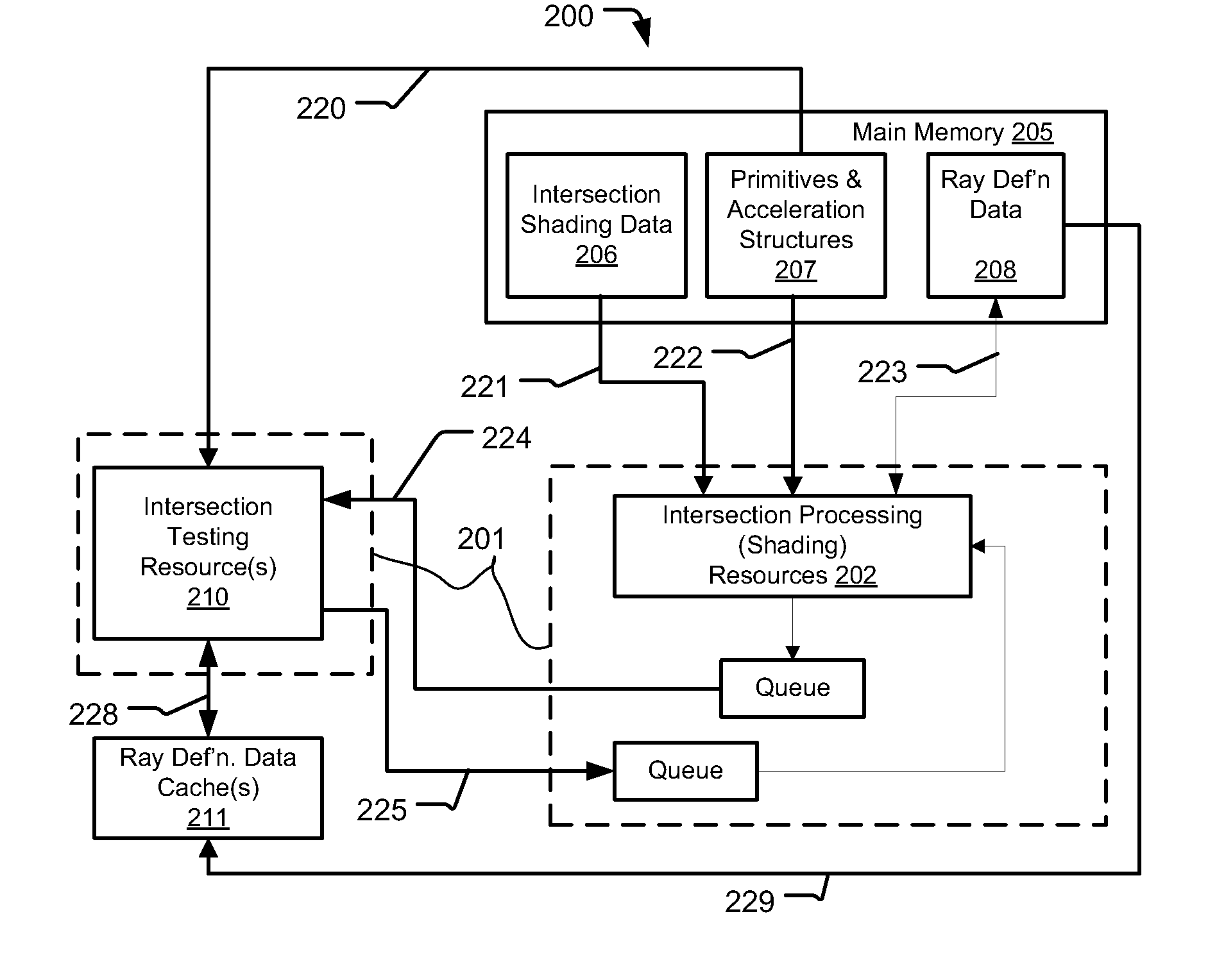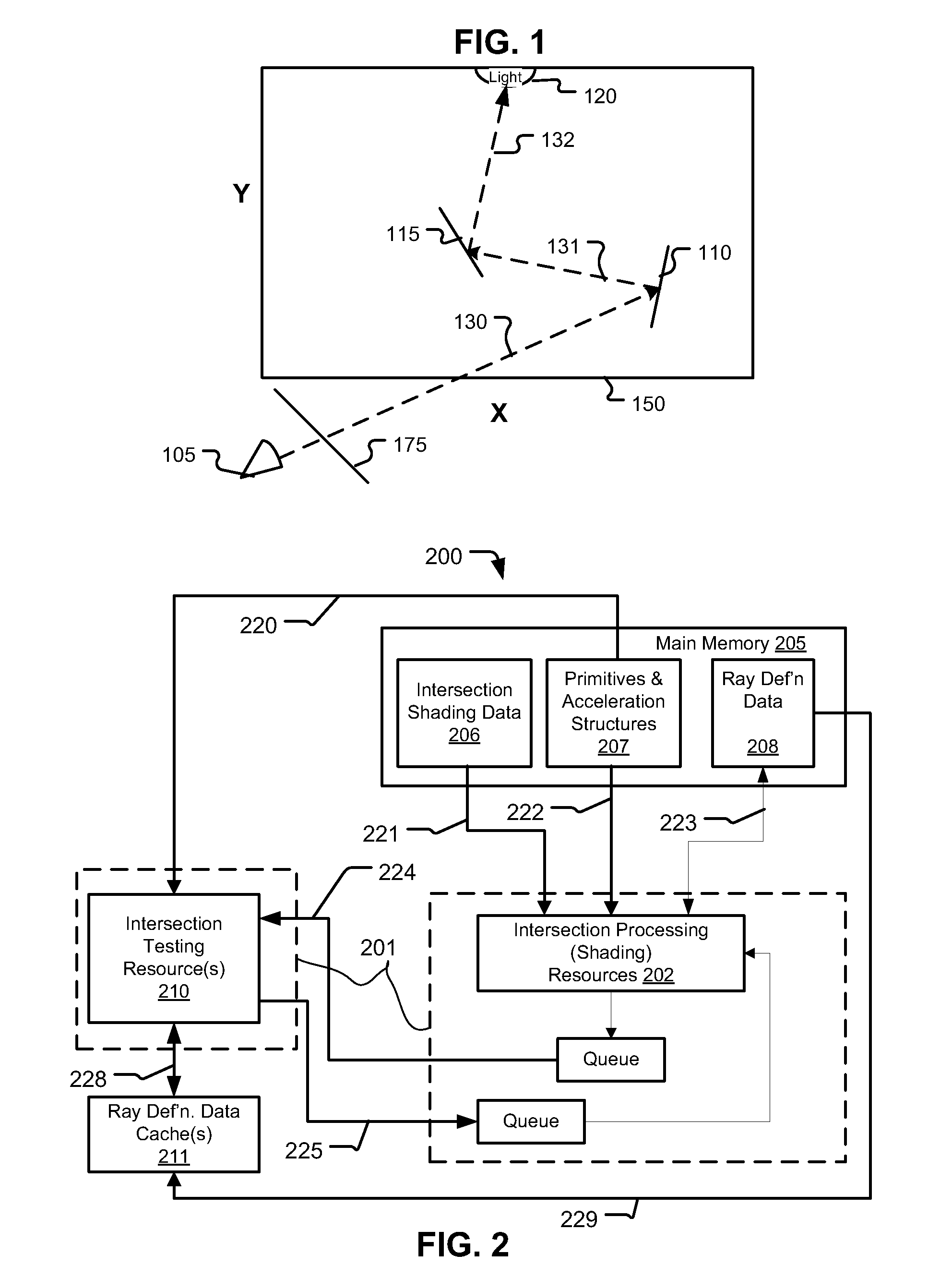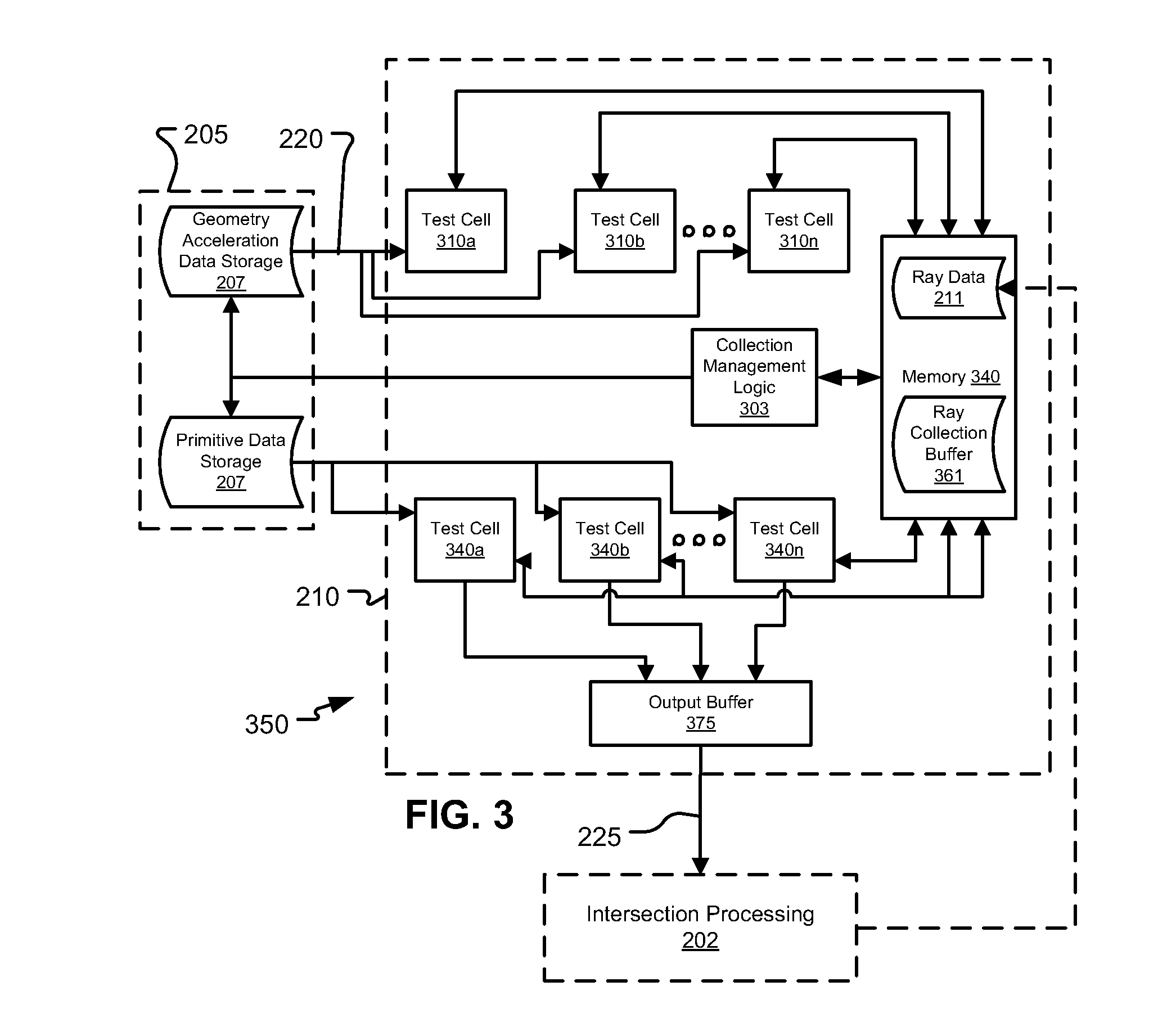Ray tracing system architectures and methods
a technology of ray tracing system and architecture, applied in image memory management, instruments, computing, etc., can solve the problem that simply providing more computation capability does not necessarily allow a suitable scaling of ray tracing speed and efficiency
- Summary
- Abstract
- Description
- Claims
- Application Information
AI Technical Summary
Benefits of technology
Problems solved by technology
Method used
Image
Examples
Embodiment Construction
[0035]The following description is presented to enable a person of ordinary skill in the art to make and use various aspects of the inventions. Descriptions of specific techniques, implementations and applications are provided only as examples. Various modifications to the examples described herein may be apparent to those skilled in the art, and the general principles defined herein may be applied to other examples and applications without departing from the scope of the invention.
[0036]For clarity in description, data for a certain type of object, e.g., a primitive (e.g., coordinates for three vertices of a triangle) usually is described simply as the object itself, rather than referring to the data for the object. For example, when referring to “a ray”, it is to be understood that data representative of that ray is referenced, as well as the concept of the ray in the scene.
[0037]FIG. 1 illustrates a simplified scene setup, in which a 2-D plane 175 is disposed between a camera 105...
PUM
 Login to View More
Login to View More Abstract
Description
Claims
Application Information
 Login to View More
Login to View More - R&D
- Intellectual Property
- Life Sciences
- Materials
- Tech Scout
- Unparalleled Data Quality
- Higher Quality Content
- 60% Fewer Hallucinations
Browse by: Latest US Patents, China's latest patents, Technical Efficacy Thesaurus, Application Domain, Technology Topic, Popular Technical Reports.
© 2025 PatSnap. All rights reserved.Legal|Privacy policy|Modern Slavery Act Transparency Statement|Sitemap|About US| Contact US: help@patsnap.com



